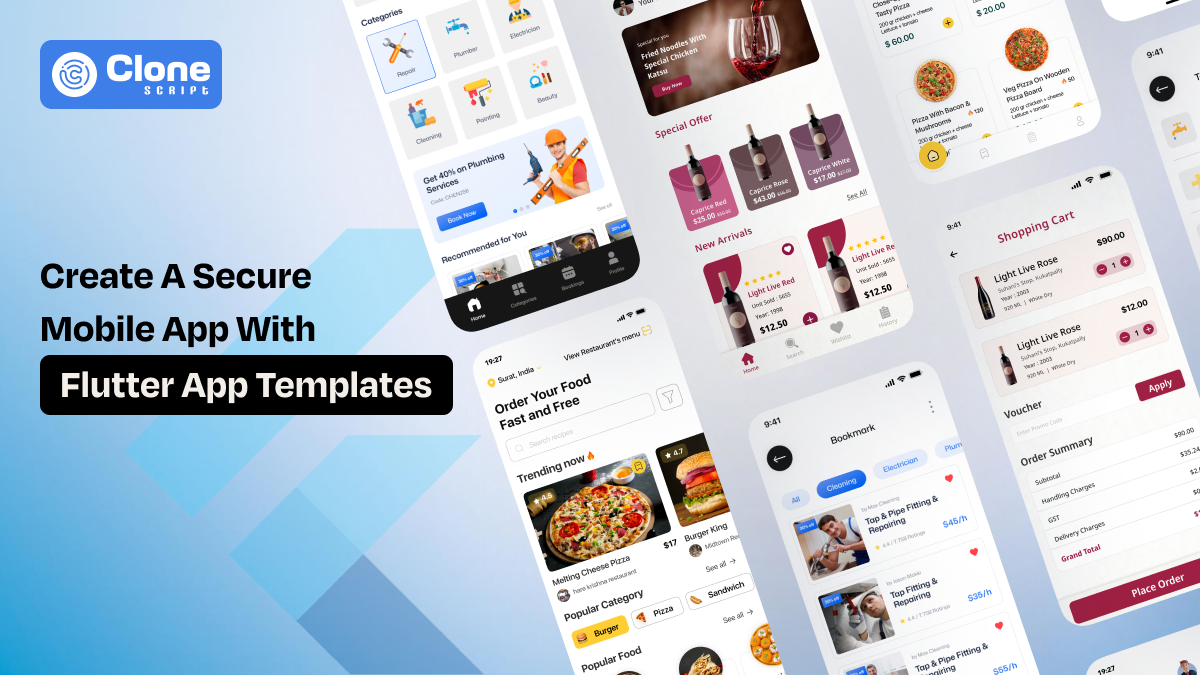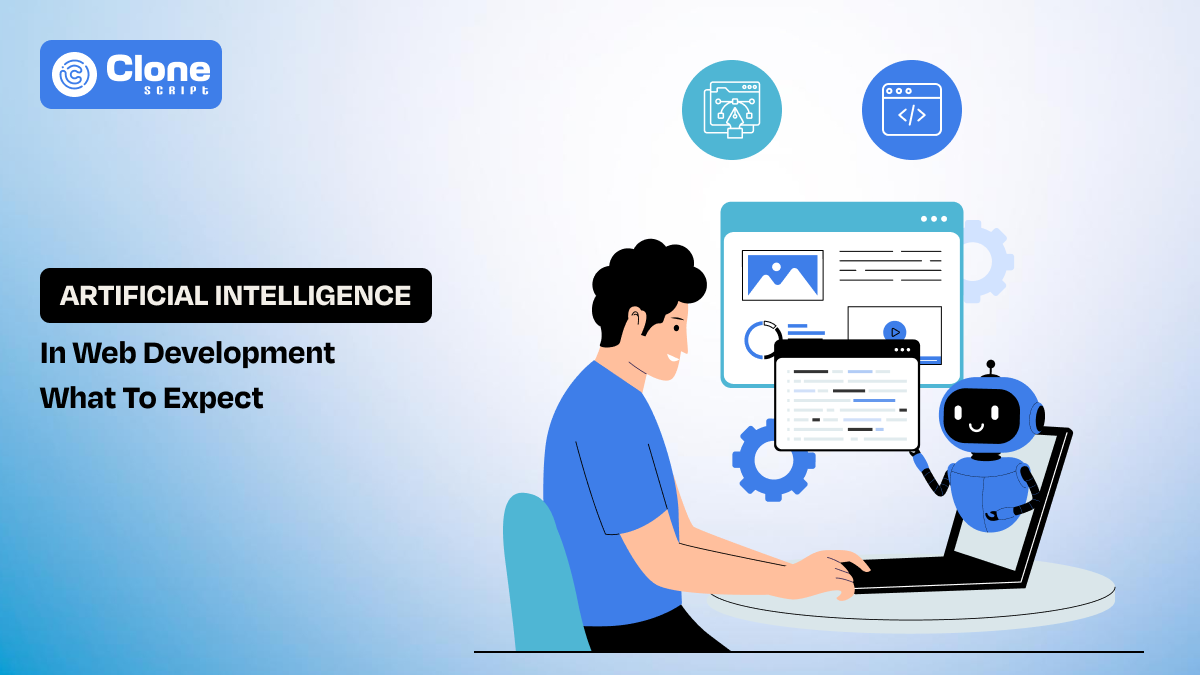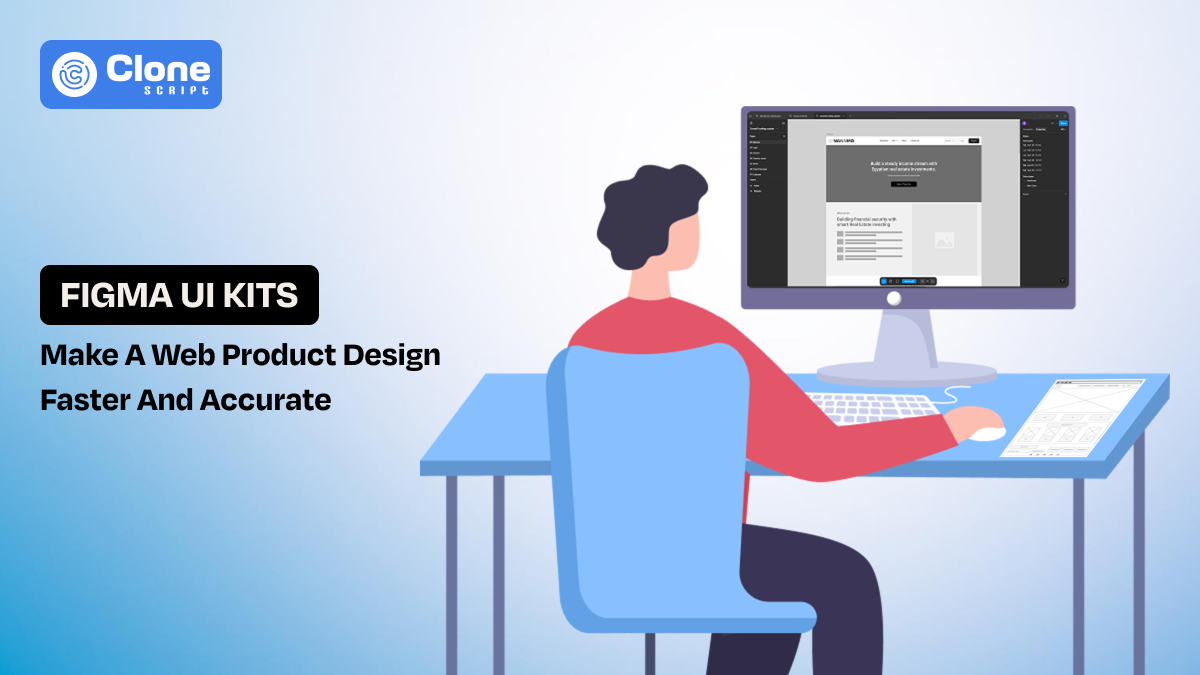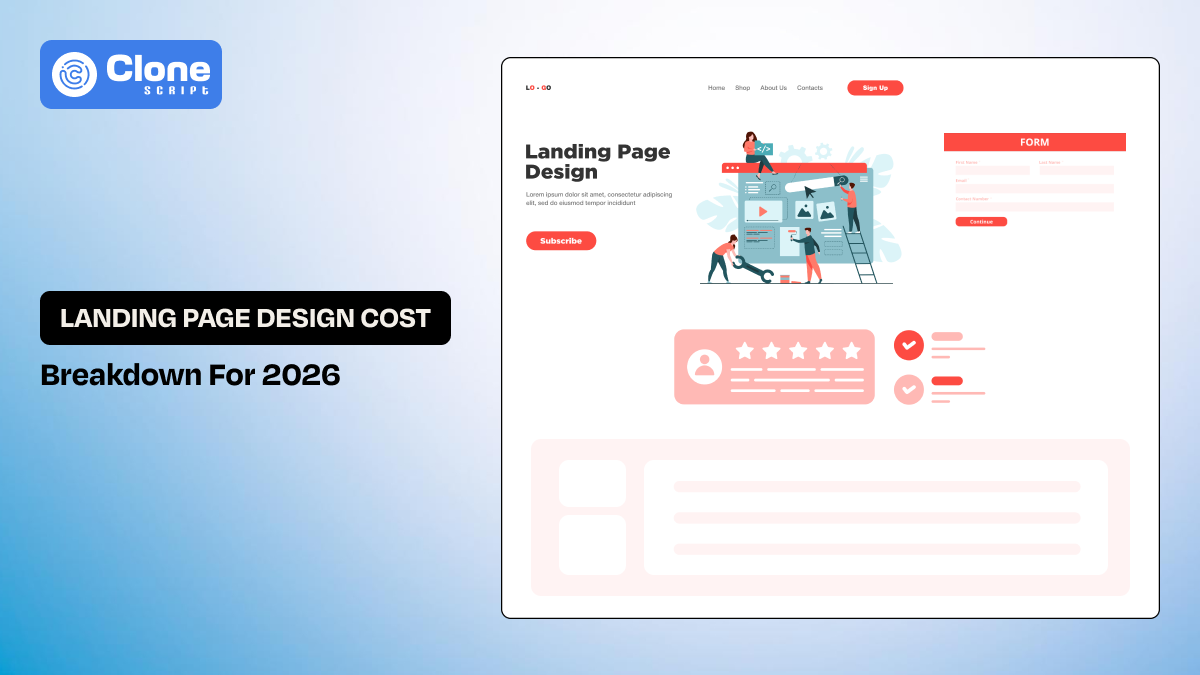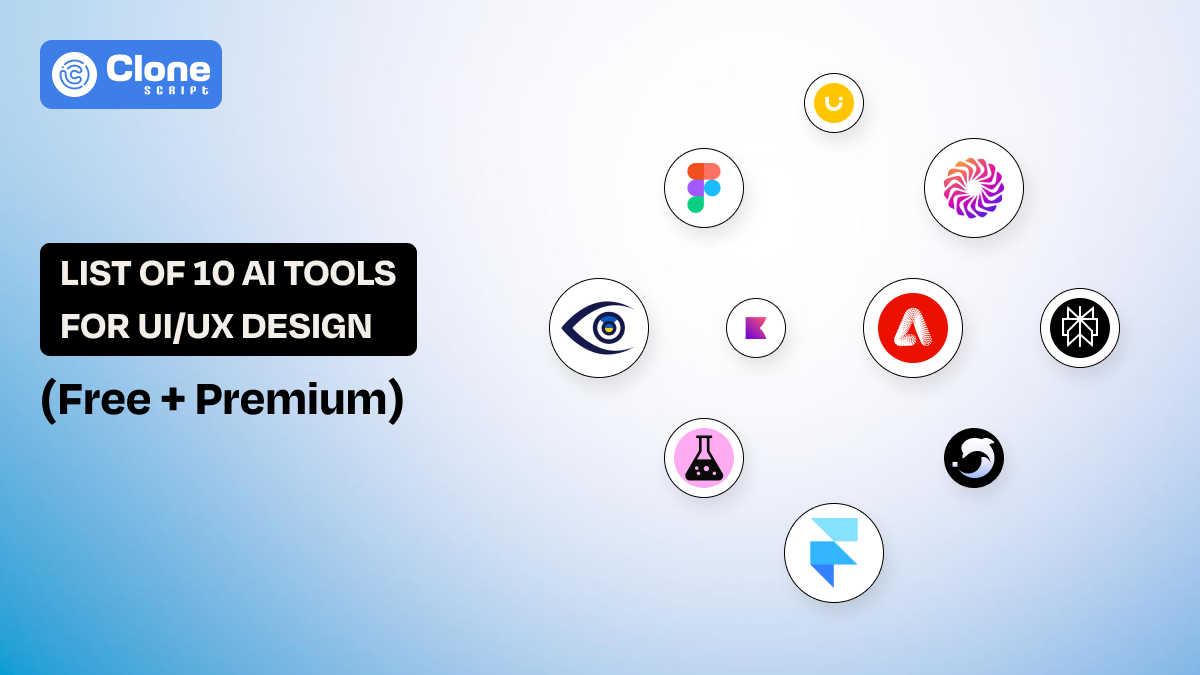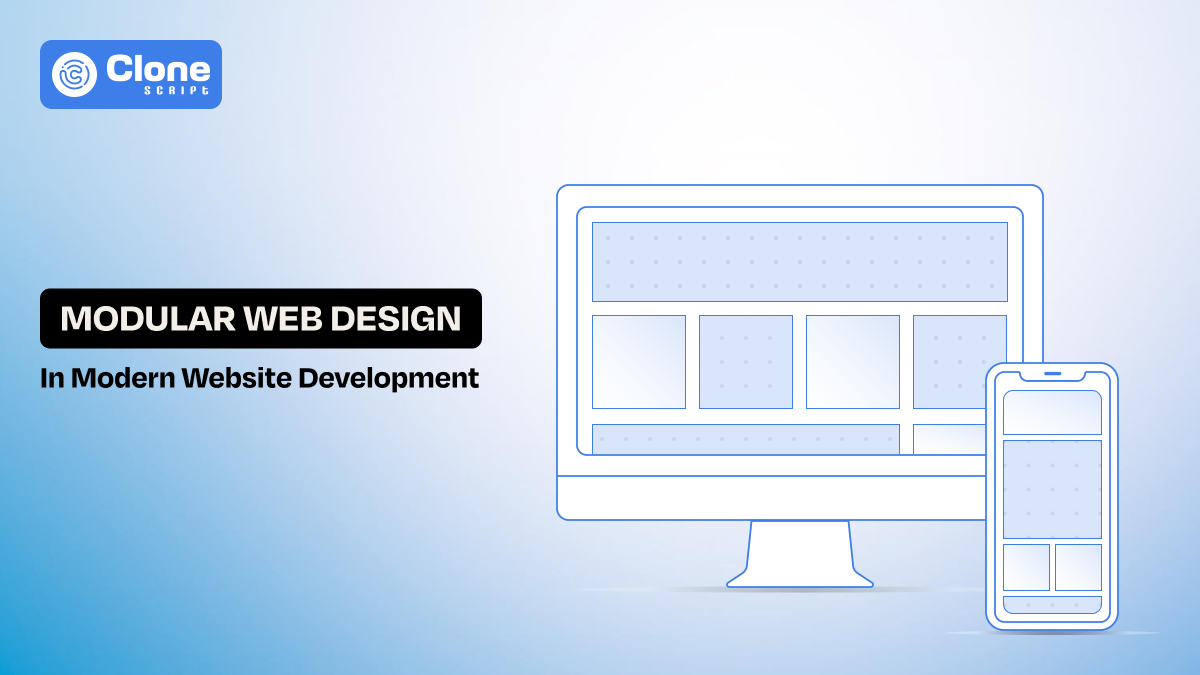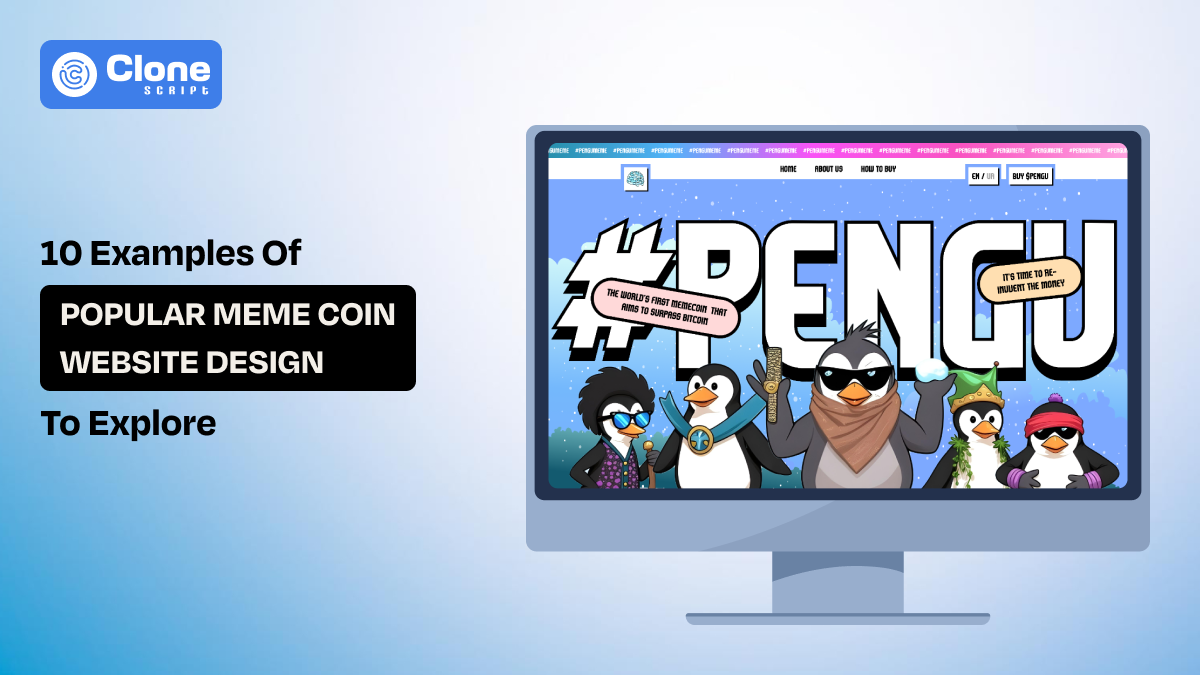How to Create Your Own App Using Flutter App Clone Template
Imagine you’re a small business owner with a great idea for a mobile app. You know it could help your customers, streamline your operations, or boost your brand. But every time you reach out to a development agency, the quote makes you confused. Six months of build time. Tens of thousands in cost. It’s enough to make anyone pause.
That’s where Flutter app clone templates come in. It is a smart option for entrepreneurs, founders, and startups who want to build fast, launch smart, and stay within budget. If you're wondering how to create your app using a Flutter template, this guide is exactly what you need.
We’ll walk you through what clone apps are, why they’re ideal for small businesses, and how to customize and launch your own. Plus, we’ll share best practices to make your app truly stand out.
What Is a Flutter App Clone Template?
A Flutter app clone template is a pre-built mobile app created using the Flutter framework that reflects the core features of popular apps. Think Uber, WhatsApp, Instagram, or Airbnb. It’s not a knockoff. It’s a legally customizable starting point for your Flutter mobile application that reduces time and cost.
Instead of building your Flutter app from the ground up, you get a functional codebase that’s already structured with the right app interface design, backend integrations, and user flows. All you need to do is tweak the branding, functionality, and content to match your business goals.
But what about a Flutter?
Flutter is a cross-platform framework, lets you deploy your app on both Android and iOS using a single codebase. It means double the reach for half the effort. This sounds good.
Now, let’s check out what reasons that point startups to pick this modern option.
Why Small Businesses & Startups Love Flutter Clone App Templates?
Here’s why smart startups are turning to clone app templates:
-
Speed to Market: Don’t wait to launch your mobile application within a 3-month timeframe. Simply get it live in a few days without compromising the quality.
-
Cost Efficiency: Pre-built templates cost of custom development. Even around $2000, you can build a polished and secure app for a game, e-commerce, or online learning platform.
-
Professional UI/UX: Most templates come with a premium Flutter UI kit baked in. This means you will get a professionally created app interface tested for a well-optimized user experience.
-
Customization Flexibility: Don’t think choosing a pre-built solution will make the app generic like others. You can personalize it, from branding to features, based on the user preferences.
-
Scalability: Flutter templates support future upgrades and plugin integrations. Whether you want a crypto payment gateway integration to an e-commerce app or a VR feature in a learning mobile app, it can be done. There’s no need to start the development from the first step again.
Let’s understand it with a real example.
Your business is selling milk products in the city of New York. You analyze that customers are giving feedback to deliver the products online. So, you think of going with a dedicated business app where anyone can order the items and get them in minutes.
But the question is, with a limited budget, can you reach the heights of custom Android and iOS app development?
Maybe not, if you just started.
There are two options you have.
-
Hire an agency and wait 6–8 months. Not useful for you at the time.
-
Use a clone app of a milk product delivery platform and customize it.
If you choose the second path. Within 3 weeks, you can launch their MVP with real-time delivery tracking, customer sign-ups, and a payment gateway. The total cost remains under $2,000.
Don’t know what kind of templates are available? Let’s find it
5 Types of Clone Templates You Can Use
The beauty of Flutter is the diversity of templates available. Depending on your business model, you can choose from several categories of clone templates, each with tailored features.
1. E-commerce App Templates
If you’re selling products like garments, shoes, electronics, toys, etc., then you can choose these templates optimized for a better user experience and followed by good coding practices.
Here is the example.
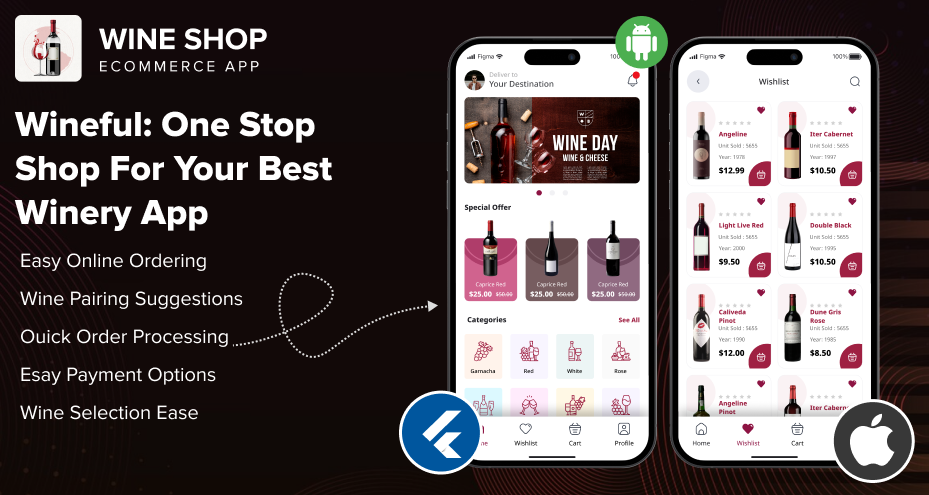
E-commerce mobile app templates generally include:
-
Product listing with grid and list view
-
Product detail pages with image sliders
-
Cart system with quantity adjustment
-
User authentication (email, phone, social login)
-
Online payment screens
-
Order tracking screen
-
Wishlist and save for later features
-
Admin dashboard to manage inventory (web-based or mobile)
-
Push notification for deals and orders
-
Multi-language and currency support
Additionally, by getting these Flutter templates, you can build a polished and modern application based on the smart option.
2. Food Delivery Clone Templates
Since the revolution of online food ordering has taken to new heights, pioneer brands like Zomato (in India) and Uber Eats (In the UK) have created opportunities for new businesses to step into the food delivery market.
Here is the example.
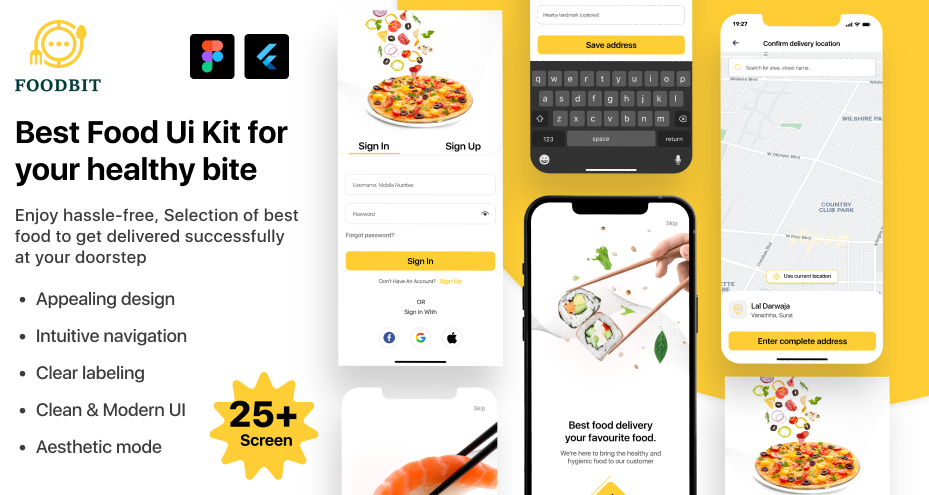
Food delivery app templates are made on the philosophy: keep the food ordering steps minimal and help customers get their meal in minutes.
It will include the following:
-
Real-time GPS tracking of delivery agents
-
Restaurant listings with ratings, cuisine filters
-
Multi-vendor support (individual restaurant panels)
-
Live order status updates (order placed → preparing → out for delivery)
-
Cart and checkout with tip and delivery instructions
-
Integrated maps and location picker
-
Online payment screens (Cash on Delivery, Stripe, Razorpay)
-
Delivery boy login and dashboard
-
Push notifications (order confirmed, driver assigned)
-
Promo codes and referral bonuses
We know user-friendly app development has become important, where user experience is prioritized. But with the templates, everything has been handled properly.
3. Service Booking App Templates
If you’re looking to make a virtual marketplace app where customers can find on-demand services and professionals can register themselves, then booking app templates are useful. Whether you’re offering Handyman services like UrbanClap or TaskRabbit, you can make a personalized platform with a proven model.
Here is the example.
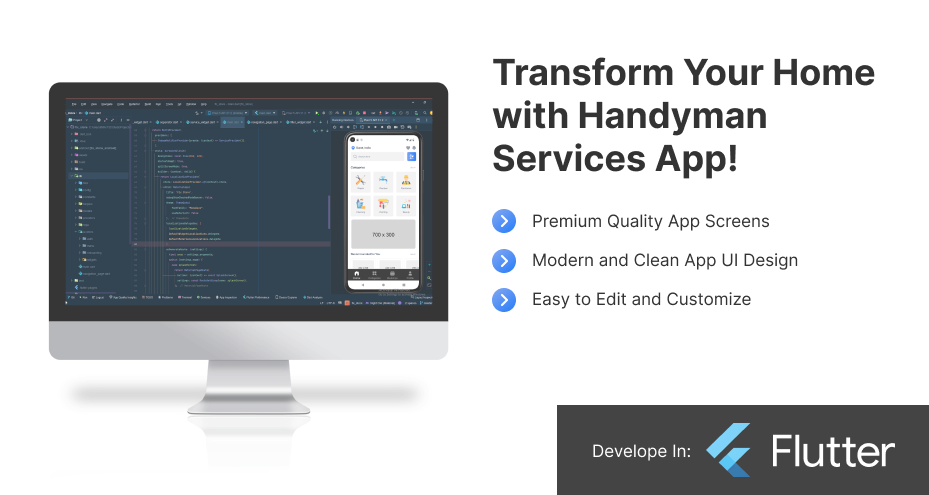
Key features inside service booking Flutter clone templates:
-
Service categories and subcategories
-
Booking calendar with time slot selection
-
In-app chat between provider and customer
-
Secure online payment with invoice generation screens
-
Real-time booking confirmation
-
Customer rating and review system
-
Provider profile management
-
Multi-service provider support
-
Geo-location-based service availability
-
Admin panel to manage bookings and payments
As the on-demand service sector is growing daily, a functional mobile app is important, and undoubtedly, you can build it with the templates.
4. Crypto Exchange and FinTech App Templates
Looking to launch the next Binance-inspired app or FinTech app like Google Pay, it becomes complex due to its security importance. With the app templates, development is smoother and flexible without affecting the branding.
Here is the example.
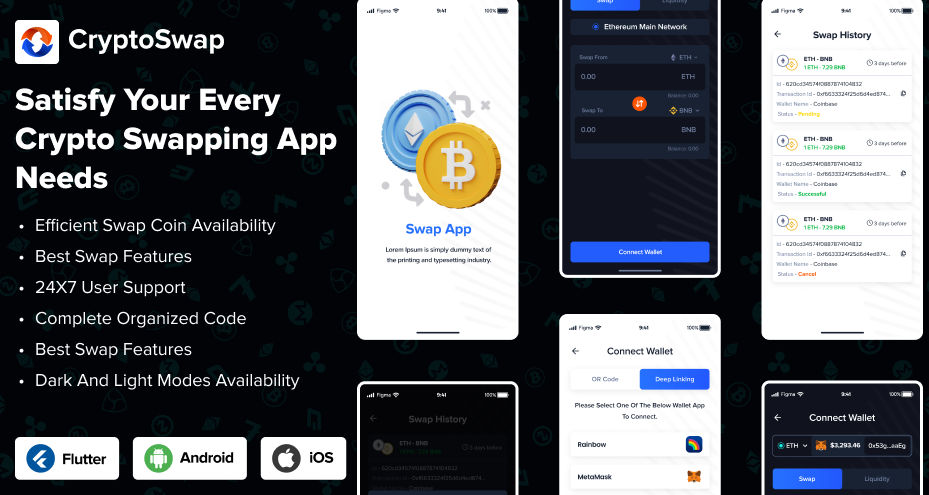
The best part of these modern solutions is that they have already been tested with the proven method and adopted by massive user bases. So, the fear of losing the product’s demand will be removed, and it improves the chances of getting notified.
Things included in Flutter Templates:
-
User authentication with 2FA and biometric login
-
Crypto wallet integration (hot wallets or Web3 support)
-
Real-time price tracking (via CoinGecko or similar APIs)
-
Buy/sell crypto modules with integrated payment gateways
-
Wallet-to-wallet transfer and QR code scanning
-
KYC/AML onboarding and document upload
-
Transaction history and downloadable statements
-
Multi-currency and token support
-
Admin dashboard for managing users and reporting
-
Push notifications for price alerts and transactions
Save time and hours of coding to make a quick MVP for the finance app and move forward with the smart option.
5. On-Demand Ride-Sharing Templates
Online ride-sharing app templates provide all the essentials to launch a transport service like Uber or Lyft. These templates are business-ready from day one. They’re especially useful for startups offering taxi, shuttle, or niche logistics services. Whether you're covering a small town or an urban area, the Flutter app enables fast deployment, driver onboarding, and customer management in delivering a polished experience on both Android and iOS platforms.
Here is the example.
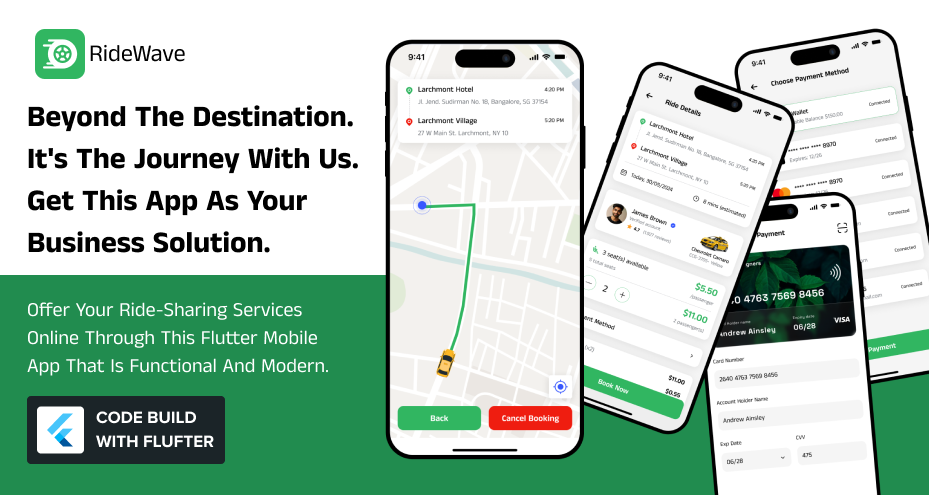
Packed features in ride-sharing Flutter clone apps:
-
Rider and driver login screens
-
Real-time map view with vehicle locations
-
Live tracking and ETA calculation
-
Fare estimation based on distance/time
-
Ride history and receipts for users
-
Driver profile management and ride acceptance
-
SOS button and contact support
-
Ratings and feedback after rides
-
Multiple vehicle type selection
-
Push notifications for ride status updates
Make your dedicated branded taxi ride-sharing mobile app using the latest template and reduce the overall development cost to be invested in other important aspects of your business.
Step-by-Step: Customize Your Flutter Clone Template
You don’t need to be a seasoned developer to customize a Flutter app template. Most clone app templates are built for adaptability. It means small business owners and startup teams can easily tailor them to suit specific needs.
Step 1: Choose the Right Template
The first and most important decision is selecting a Flutter app template that aligns with your business model. Whether it’s an e-commerce platform, a ride-sharing app, or a crypto exchange, choosing a template with modular architecture, clear folder structure, and reusable components can save hours of work.
-
Look for templates with strong user reviews, good application user experience, and complete documentation.
A good template will also provide support and regular updates, ensuring your app stays secure and compatible with Flutter upgrades.
Step 2: Set Up the Environment
To begin your Flutter app dev process, install the necessary development tools: Flutter SDK, Android Studio (or VS Code), and the required device emulators or simulators.
-
Running (flutter pub get) fetches all dependencies, while (flutter run) launches your app locally. This setup is the foundation of customizing any template and seeing real-time changes on your emulator or connected device.
Most Flutter templates include a detailed README or setup guide. It helps you to get the app running in just a few commands.
Step 3: Brand Customization
This is where your app begins to reflect your identity.
-
Update the logo, color scheme, fonts, and other visual elements to match your company branding.
-
Most Flutter UI kits include a centralized theme or style file where you can change global variables such as button colors, background shades, or font families.
All can be done without manually editing every screen. A well-designed UI instantly builds trust with users and gives your Flutter mobile application a polished, professional feel from day one.
Step 4: Content & Feature Tweaks
Now it's time to update the real meat of your app, including its functionality and content.
-
Start by changing static pages like FAQs, Terms, and About Us. Then move into customizing features such as login screens, onboarding flows, or payment integrations. Want to offer a unique checkout process or integrate third-party APIs?
Flutter's widget-based system allows you to modify the app interface design easily. You can also reconfigure push notifications, user roles, and admin panels. It is helpful when building a custom Flutter clone app for a startup's use.
Step 5: Test Your App
Before launching, it’s mandatory to test your app on multiple devices and platforms (iOS and Android). It can be done through QA & Tester professional help if you don’t have a team for it.
-
Run through every user flow, signup/login, cart management, payments, real-time features like chat or delivery tracking, etc., and fix any bugs or UX inconsistencies.
Make sure to simulate real-world behavior to check if your app crashes, lags, or creates confusion. Test edge cases like poor internet connection or invalid user input to ensure your Flutter application is stable and user-friendly in all situations.
Step 6: Deploy to App Stores
When everything works smoothly, you're ready to deploy your app.
-
Use Flutter’s build tools to generate production-ready APKs for Android (flutter build apk) and iOS apps (flutter build ios).
Follow app store guidelines closely, especially around privacy policies, data collection, and permissions. You’ll also need developer accounts on Google Play and Apple App Store. During submission, upload required assets (icons, screenshots, app description) and pass the review process. Once approved, your Flutter app will be live and ready for users to download.
Launch Strategies for Your Clone-Based App
Just because you’re using a Flutter clone app template doesn’t mean your app should feel like a copy. A thoughtful launch sets you apart, builds trust, and makes users want to stick around. Here’s how to launch smart:
1. Local First, Then Scale
Start with a narrow focus like your city, community, or niche market. It’s easier to create attention, collect real feedback, and build trust when you serve a local audience first. Grow wider once you’ve refined the experience.
2. Use Real-Time Feedback
Launch a beta version to a small group of users and ask them for honest feedback. Add a feedback form or chat option directly in the app to gather insights and fix issues quickly.
3. Incentivize Early Users
Offer discounts, giveaways, or referral bonuses to your first users. People love being rewarded, and they'll tell others. These early users can become your most loyal advocates and help spread the word.
4. Cross-Promote on Existing Channels
Don’t build an audience from scratch. Promote your app on your website, email list, and social media. Use every customer touchpoint to explain why your Flutter app makes their experience better.
Conclusion
Today, building an app doesn’t have to mean endless time or huge expense. With a well-built Flutter clone app, you can bring your business idea to life in days, not months.
Whether you’re a local store owner, service provider, or startup founder, using a Flutter app template is your shortcut to a professional, scalable, and cost-effective mobile presence.
With the right template, a clear goal, and smart customization, you can launch a beautiful, fully-functional Flutter mobile application that serves your customers and strengthens your brand.
Don’t wait for the perfect moment. Build your app today with confidence.
 BTC - Bitcoin
BTC - Bitcoin
 USDTERC20 - USDT ERC20
USDTERC20 - USDT ERC20
 ETH - Ethereum
ETH - Ethereum
 BNB - Binance
BNB - Binance
 BCH - Bitcoin Cash
BCH - Bitcoin Cash
 DOGE - Dogecoin
DOGE - Dogecoin
 TRX - TRON
TRX - TRON
 USDTTRC20 - USD TRC20
USDTTRC20 - USD TRC20
 LTC - LiteCoin
LTC - LiteCoin

